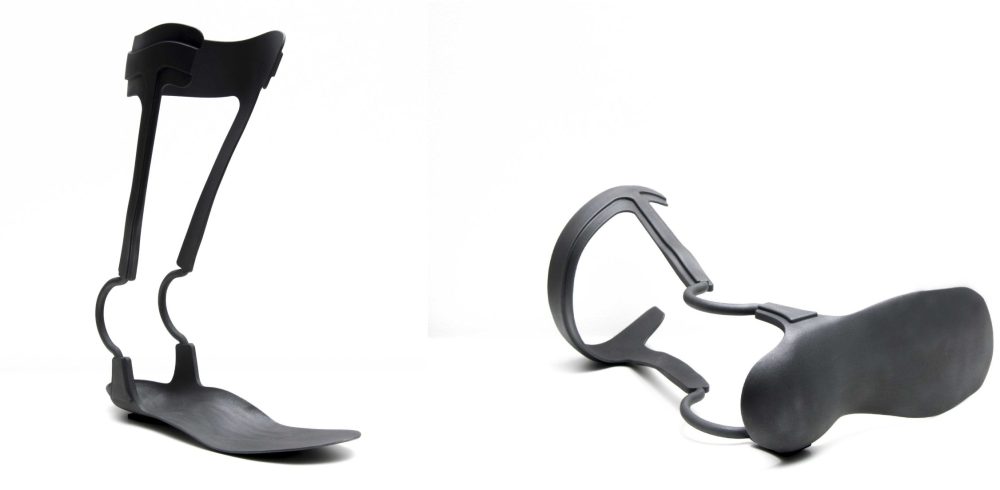Crispin Orthotics, a leading HCPC registered clinic specialising in the production and maintenance of orthosis, has invested in a HP 4200 Multi Jet Fusion printer for the manufacture of orthotic devices. Crispin approached Europac 3D seeking a new 3D printing solution and Computer Aided Design (CAD) software package that could meet the growing demand for orthotics while reducing printing costs and increasing the speed of part production.
Europac were able to provide a solution for Crispin by introducing them to HP’s Multi Jet Fusion 3D printers which deliver a solution that is up to 10 time faster and at a 50% cost-per-part reduction, to comparable SLS technology. The increased speed and cost reduction achieved from the new HP machines means that hundreds of customised and completely personal orthotics can be 3d printed overnight in one twelve hour build process.
Another consideration for Crispin is that the parts produced were strong enough and have enough flexibility to endure the rigours of every day human movement. The sample parts produced on the HP machine passed all the tests and what is particularly significant with the HP multi jet fusion technology is that the parts produced have homogeneous strength in all three axes of build and therefore the orientation of build does not affect part strength or quality.
The HP 3D printer was paired with Siemens NX software featuring topology optimisation, which not only enables technicians to strip weight from the design but also add strength to key areas. The software also provides a ‘nesting’ capability which organises multiple 3D parts to fit perfectly together on the printer bed, reducing the number of print runs needed – thus increasing the speed while reducing the cost of production.
Crispin orthotics was able to use their Siemens NX CAD software and HP Multi Jet Fusion printer for a recent project. The new 3D technologies allowed Crispin to develop a 3D printed orthotic for the arm with an integrated joint at the elbow and an attachment at the end of the device which allows for the use of prosthetic devices. The single printed part was made from durable nylon material which is also very light weight and durable.
“3D scanning and printing has revolutionised the speed and quality of parts we’re able to produce for clients. Having the ability to create a bespoke devise that is lightweight, durable and accurate to 0.2mm has obvious benefits to the user. The business also benefits from the speed of 3D printing parts as well as cost savings of approximately 40% on each part by removing the need for multiple components in the supply chain and assembly,” said Mark Thaxter, Managing Director of Crispin Orthotics.
“Using 3D scanning and printing also provides greater freedom on the design of products particularly those with complex geometry. Having the ability to vary the thickness of the device in certain parts also allows us to produce devices not possible with current methods of manufacturing,” Mark added.















